
Today, a hundred years on, most historians find it difficult to justify the carnage that was the Great War. Back in 1919, many were morally divided on the issue. One man who saw the fight against German brutality as a wholly justified, glorious crusade, was the poet and playwright Henry Newman Howard (1861 – 1929). On reading The Paths of Glory, an anthology of anti-war poetry, he sent a scathing letter to its pacifist editor, Bertram Lloyd. A typewritten copy of this letter was recently found, tucked in with a batch of press cuttings relating to the offending book, in a copy of it , which may have been Lloyd’s own, that ended up the library of Maria Assumpta College, Kensington and was subsequently de-accessioned into the secondhand book trade.
Here in full is Howard’s letter to Lloyd:
29 Jan 1919
25, Charlbury Road,
Oxford.
Sir,
Your’ anthology ‘of War Poems is a crime. I grieve that the publishing house fathered by noble John Ruskin should be Sponsors to this execrable publication. Never again will I purchase a book bearing the stamp fouled by the guilt of this sinister booklet. Other books there are one recalls as foul things. Il Principe, possibly John Davidson’s Testament; Nietzsche—these last, like the German Empire, died mad of their guilty thoughts. Your book, garbage from end to end—if not in the individual poems, assuredly in their bringing together—carries the sickly unction of a spurious humanitarianism.
Continue reading
 D.L.Rolton of Ambleside, Cumbria, a fan of Haining’s The Fortune Hunter’s Guide. In ‘ gratefulness ‘ to the author for his ‘ useful and interesting ‘ book Rolton offers the following nugget of information regarding ‘ Lame Jack’s Fortune’.
D.L.Rolton of Ambleside, Cumbria, a fan of Haining’s The Fortune Hunter’s Guide. In ‘ gratefulness ‘ to the author for his ‘ useful and interesting ‘ book Rolton offers the following nugget of information regarding ‘ Lame Jack’s Fortune’.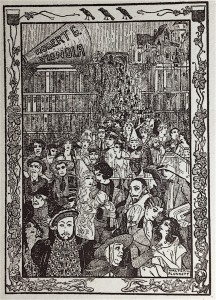
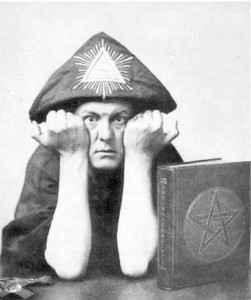

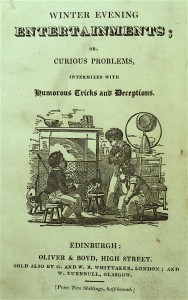
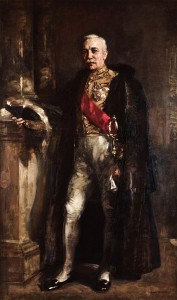
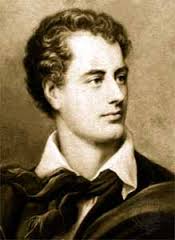

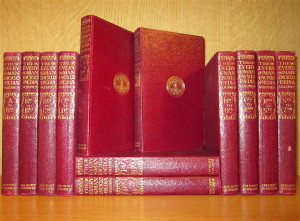 Found- a bookmark advertising the virtues of Everyman’s Encyclopaedia. For obvious reasons the set is now of very little value, except as decoration. In the 1920s, when these were written it was a (relatively) portable fount of all knowledge – hence these brief encomiums from the great and the good (and the titled). Sets could be bought with their own small book-case ‘in unstained oak’ and the deluxe versions in full leather (£7 10 shillings.) It boasted 7 million words and 2700 illustrations plus a World Atlas.
Found- a bookmark advertising the virtues of Everyman’s Encyclopaedia. For obvious reasons the set is now of very little value, except as decoration. In the 1920s, when these were written it was a (relatively) portable fount of all knowledge – hence these brief encomiums from the great and the good (and the titled). Sets could be bought with their own small book-case ‘in unstained oak’ and the deluxe versions in full leather (£7 10 shillings.) It boasted 7 million words and 2700 illustrations plus a World Atlas.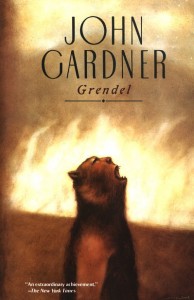 children’s books – this letter. The sender’s name has been clipped off but he or she was obviously something of a power in the literary world. It displays two opposing views of the writer John Gardner. The second letter was written to propose Symonds for a literary position and talks of Gardner in glowing terms, the first letter (to Symonds) declares that he is ‘…one of the worst novelists in the world.’ This is the world of Martin Amis’s The Information, his great novel of literary rivalry.
children’s books – this letter. The sender’s name has been clipped off but he or she was obviously something of a power in the literary world. It displays two opposing views of the writer John Gardner. The second letter was written to propose Symonds for a literary position and talks of Gardner in glowing terms, the first letter (to Symonds) declares that he is ‘…one of the worst novelists in the world.’ This is the world of Martin Amis’s The Information, his great novel of literary rivalry.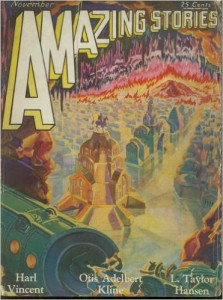 Found in The Poetry of Flight, an Anthology (edited by Stella Wolfe Murray, published by Heath Cranton, London 1925) this stirring poem by the American poet Minna Irving (1857 – 1940) Her real name was Minnie Odell Michiner and she was from Tarrytown, New York. She published a poetry collection, “Songs of a Haunted Heart” in 1888, and published poems in turn-of-the-century periodicals such as Munsey’s, The Smart Set, and The Gray Goose. She also wrote a science fiction story “The Moon Woman” which appeared in the November 1929 issue of Amazing Stories (right.) She has no Wikipedia entry. The anthology, which has pieces by Homer, Swinburne, Duncan Campbell Scott and W.H. Davies is dedicated ‘..to the memory of all have given their lives for aeronautical progress.’ Her poem could have been written by an Italian Futurist and has all the excitement of the early days of aviation.
Found in The Poetry of Flight, an Anthology (edited by Stella Wolfe Murray, published by Heath Cranton, London 1925) this stirring poem by the American poet Minna Irving (1857 – 1940) Her real name was Minnie Odell Michiner and she was from Tarrytown, New York. She published a poetry collection, “Songs of a Haunted Heart” in 1888, and published poems in turn-of-the-century periodicals such as Munsey’s, The Smart Set, and The Gray Goose. She also wrote a science fiction story “The Moon Woman” which appeared in the November 1929 issue of Amazing Stories (right.) She has no Wikipedia entry. The anthology, which has pieces by Homer, Swinburne, Duncan Campbell Scott and W.H. Davies is dedicated ‘..to the memory of all have given their lives for aeronautical progress.’ Her poem could have been written by an Italian Futurist and has all the excitement of the early days of aviation. Listing British novelists or poets who were also medics is a fun party game. Going right back to the eighteenth century one can think of Goldsmith and Smollett. From the nineteenth, I suppose Keats can be included, although without a degree in medicine, he can’t be classed as a physician. Thomas Lovell Beddoes is a less well known example, as is Samuel Warren, who ought to be better known, especially as his ground-breaking Passages from the Diary of a late Physician heavily influenced the Bronte sisters. Among the twentieth century poets there are a few, including Dannie Abse and Alex Comfort and I dare say one or two writers studied medicine, but never practised it. I don’t think Somerset Maugham did, apart from a stint in the Red Cross. And then there is Gabriel Fielding (1916 – 86).He certainly practised. In fact he was a GP and a prison doctor based in Maidstone for many years until literary fame allowed him to give up medicine and try his luck in America. With a mother who was a descendant of Henry Fielding, he certainly possessed the literary credentials to succeed, and indeed he did, but not so much in his native land, where he is still little known. The reputation of Alan Gabriel Barnsley (his real name) is well documented in a review dated April 6th 1963 from the Haining Archive. In it, John Horder, himself a doctor and writer, marks the publication of Fielding’s fourth novel, The Birthday King, which had just appeared in the States, with the statement that in America he was acknowledged as ‘ one of our leading novelists, along with Graham Greene, Muriel Spark and Iris Murdoch’. According to Horder, Gabriel’s obsession with ‘the darkness in man ‘ was present from the start. In his debut novel, Brotherly Love (1954), for instance, Fielding’s hero, David Blaydon, who is based on the author’s eldest brother George, gets pushed into the Church, becomes entangled in the lives of various women in his parish and eventually falls ‘a great height from a tree to be found dead by one of his brothers in one of the most horrifying scenes in fiction’.
Listing British novelists or poets who were also medics is a fun party game. Going right back to the eighteenth century one can think of Goldsmith and Smollett. From the nineteenth, I suppose Keats can be included, although without a degree in medicine, he can’t be classed as a physician. Thomas Lovell Beddoes is a less well known example, as is Samuel Warren, who ought to be better known, especially as his ground-breaking Passages from the Diary of a late Physician heavily influenced the Bronte sisters. Among the twentieth century poets there are a few, including Dannie Abse and Alex Comfort and I dare say one or two writers studied medicine, but never practised it. I don’t think Somerset Maugham did, apart from a stint in the Red Cross. And then there is Gabriel Fielding (1916 – 86).He certainly practised. In fact he was a GP and a prison doctor based in Maidstone for many years until literary fame allowed him to give up medicine and try his luck in America. With a mother who was a descendant of Henry Fielding, he certainly possessed the literary credentials to succeed, and indeed he did, but not so much in his native land, where he is still little known. The reputation of Alan Gabriel Barnsley (his real name) is well documented in a review dated April 6th 1963 from the Haining Archive. In it, John Horder, himself a doctor and writer, marks the publication of Fielding’s fourth novel, The Birthday King, which had just appeared in the States, with the statement that in America he was acknowledged as ‘ one of our leading novelists, along with Graham Greene, Muriel Spark and Iris Murdoch’. According to Horder, Gabriel’s obsession with ‘the darkness in man ‘ was present from the start. In his debut novel, Brotherly Love (1954), for instance, Fielding’s hero, David Blaydon, who is based on the author’s eldest brother George, gets pushed into the Church, becomes entangled in the lives of various women in his parish and eventually falls ‘a great height from a tree to be found dead by one of his brothers in one of the most horrifying scenes in fiction’. 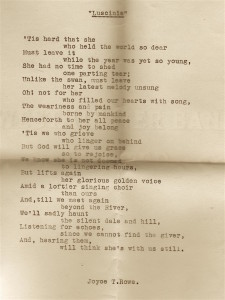 Found— an envelope crammed with an intriguing collection of newspaper cuttings and Velox snaps, most dating to 1931. The majority of the cuttings concern the failing health of forty three old Bertha Lewis, the famous ‘Savoyard’, who at the height of her singing career with the D’Oyly Carte Opera, was badly injured when a car driven by fellow singer, Sir Henry Lytton, veered off the road and rolled down an embankment during a violent rainstorm between Huntingdon and Cambridge.
Found— an envelope crammed with an intriguing collection of newspaper cuttings and Velox snaps, most dating to 1931. The majority of the cuttings concern the failing health of forty three old Bertha Lewis, the famous ‘Savoyard’, who at the height of her singing career with the D’Oyly Carte Opera, was badly injured when a car driven by fellow singer, Sir Henry Lytton, veered off the road and rolled down an embankment during a violent rainstorm between Huntingdon and Cambridge.

 Found – this rare and attractive paperback guide to London published by Andre Deutsch in 1953 and illustrated by Edward Bawden. This extract of three entries gives the flavour
Found – this rare and attractive paperback guide to London published by Andre Deutsch in 1953 and illustrated by Edward Bawden. This extract of three entries gives the flavour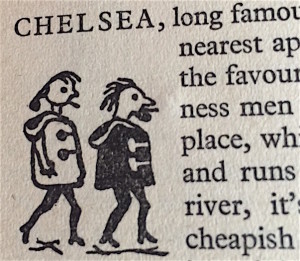



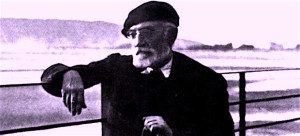 Found in Essays and soliloquies by Miguel de Unamuno (London: Harrap 1924) this preface written on the windswept Spanish island of Furteventura. The island is now mainly a holiday destination, although there is an impressive statue of Unamuno by the main road and also a life size statue of him on a side street.
Found in Essays and soliloquies by Miguel de Unamuno (London: Harrap 1924) this preface written on the windswept Spanish island of Furteventura. The island is now mainly a holiday destination, although there is an impressive statue of Unamuno by the main road and also a life size statue of him on a side street.